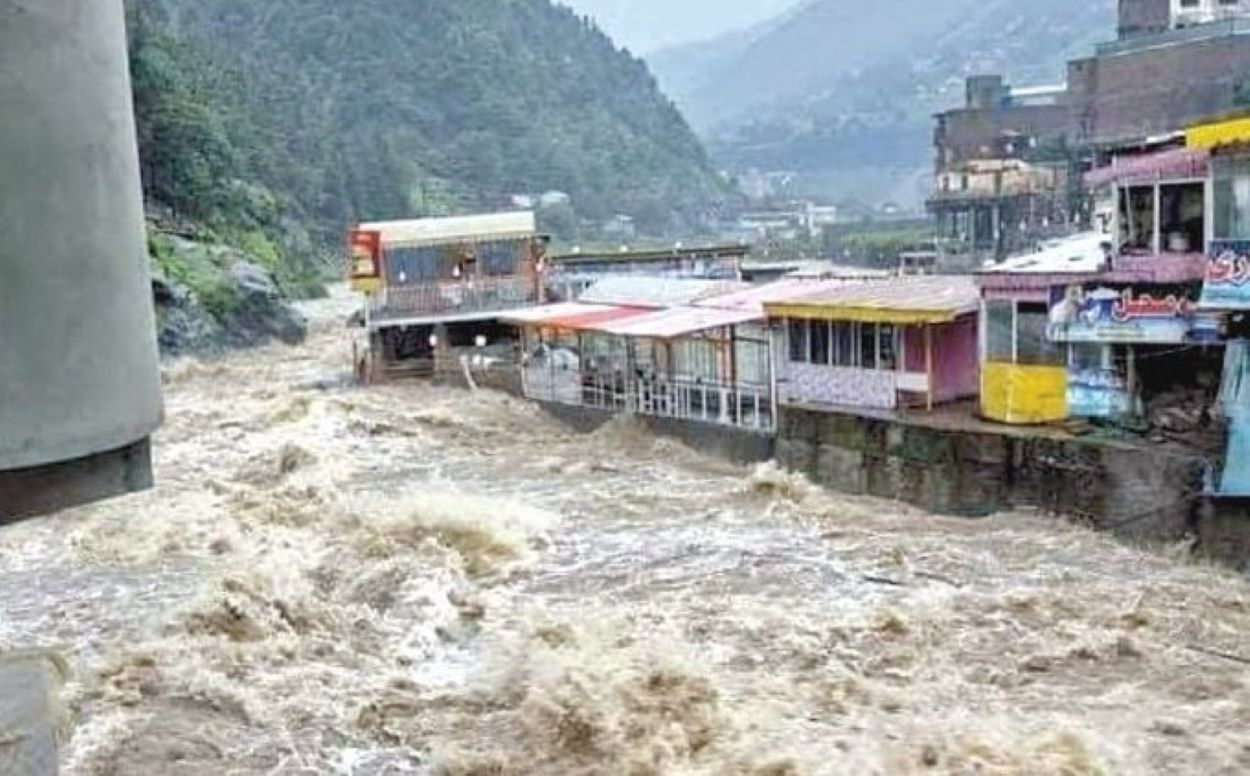Pakistan is grappling with devastating monsoon rains that have resulted in nine confirmed fatalities and widespread urban flooding across multiple regions. The current weather crisis mirrors patterns from historic floods in 2010 and 2022, raising urgent concerns about climate resilience in vulnerable areas.
The human toll has been particularly severe in Punjab province, where three family members, including two children, died from electrocution in Kasur district. Other casualties occurred due to flash flooding and structural collapses as torrential rains pounded residential areas. The Pakistan Meteorological Department confirms this year’s rainfall intensity has already surpassed 2023 levels by 40% in critical watershed regions.
Major urban centres are experiencing unprecedented disruptions. In Lahore, the drainage infrastructure failed along key corridors, including Ferozepur Road and Gulberg, resulting in hazardous flood conditions. Islamabad’s vital Srinagar Highway became completely impassable, while Gujranwala’s industrial zone reported water levels exceeding three feet. These conditions recall the early stages of Pakistan’s catastrophic 2022 floods that ultimately displaced 33 million people.
WHO, Pakistan and partners prepare health emergency response for 1.3 million people ahead of monsoon floods. Find out how, and why it is crucial to save lives :https://t.co/fDu2NlfHbn pic.twitter.com/bnblor11Ja
— WHO Pakistan (@WHOPakistan) July 10, 2025Meteorologists warn of escalating threats across multiple fronts. Mountainous regions in Khyber-Pakhtunkhwa face imminent landslide risks that could isolate communities. River systems, including the Chenab and Ravi, are approaching historically dangerous levels, with floodwaters already inundating adjacent farmland. Even Karachi’s typically resilient infrastructure showed strain as the Gulshan-e-Hadeed area experienced uncharacteristic waterlogging.
The National Disaster Management Authority has activated emergency protocols last used during the 2010 flood disaster. Military engineering units deployed to Lahore and Islamabad are working to reinforce critical infrastructure. Provincial response teams remain on high alert as weather models predict continued precipitation through July 11.
Heavy downpours on today and tomorrow July 10-11, 2025
NOTE: Public are advised to take precautionary measures during the weather activity. pic.twitter.com/NjQ58v1JQl
— Pak Met Department محکمہ موسمیات (@pmdgov) July 10, 2025Climate scientists emphasise the troubling pattern in these weather events. Dr. Fahad Saeed of the Climate Policy Development Institute notes, “The current monsoon behaviour shows disturbing similarities to the 2022 disaster’s formative phase, particularly in its rapid intensification and geographic spread.” This assessment has prompted calls for immediate preventive action in high-risk districts.
Rescue operations continue across affected regions, with authorities urging extreme caution. The Provincial Disaster Management Authority has issued specific warnings for residents to avoid floodwaters due to the risk of electrocution and potential structural collapses. Emergency services report particular challenges reaching isolated communities in Balochistan, where flash floods have severed road networks.






